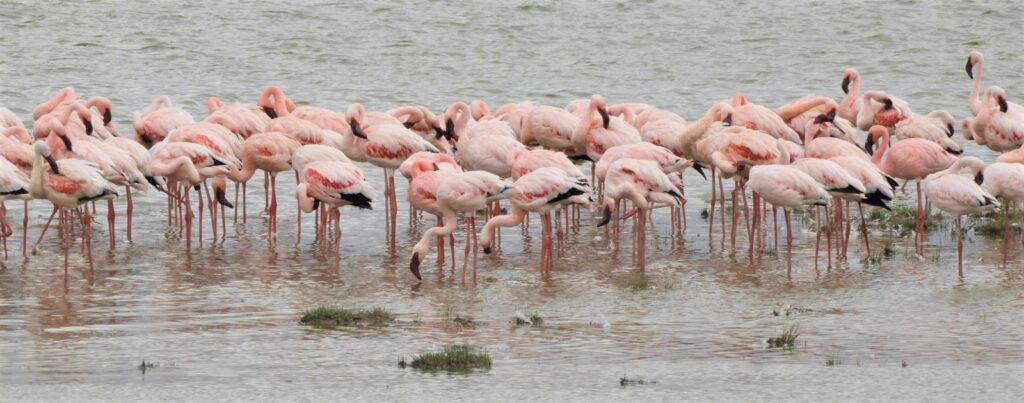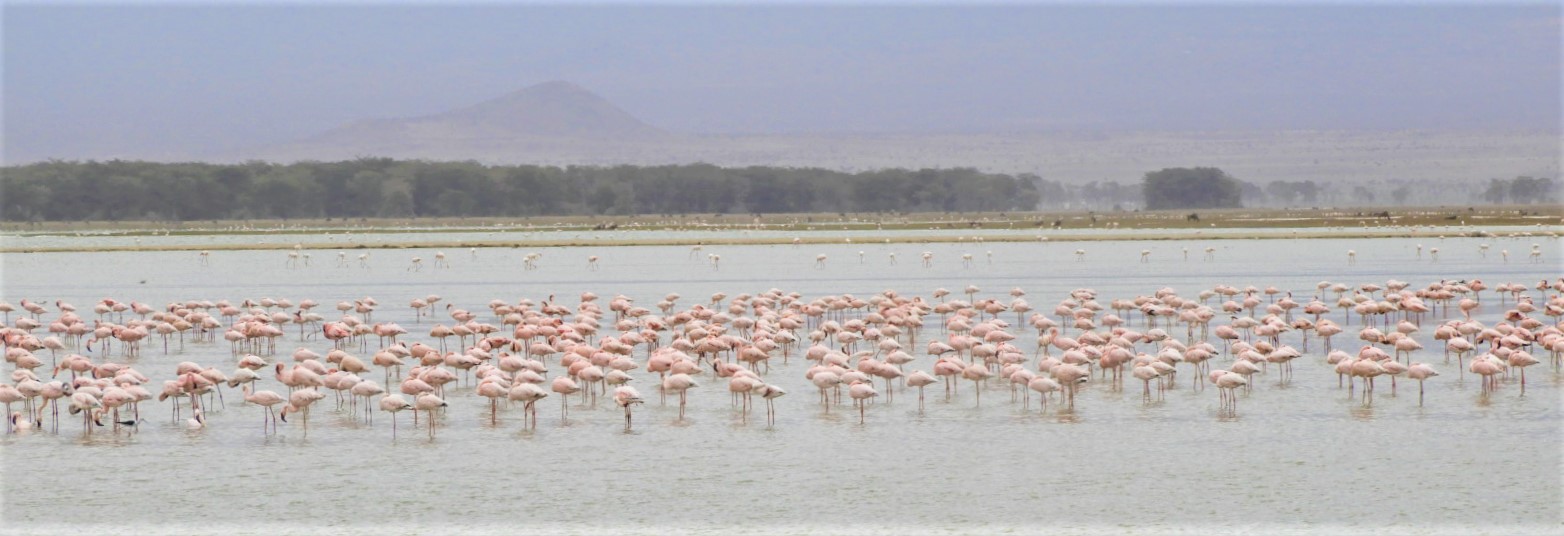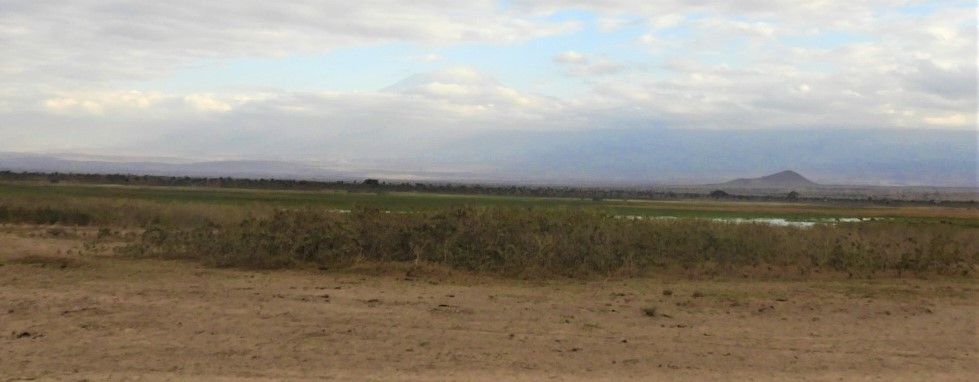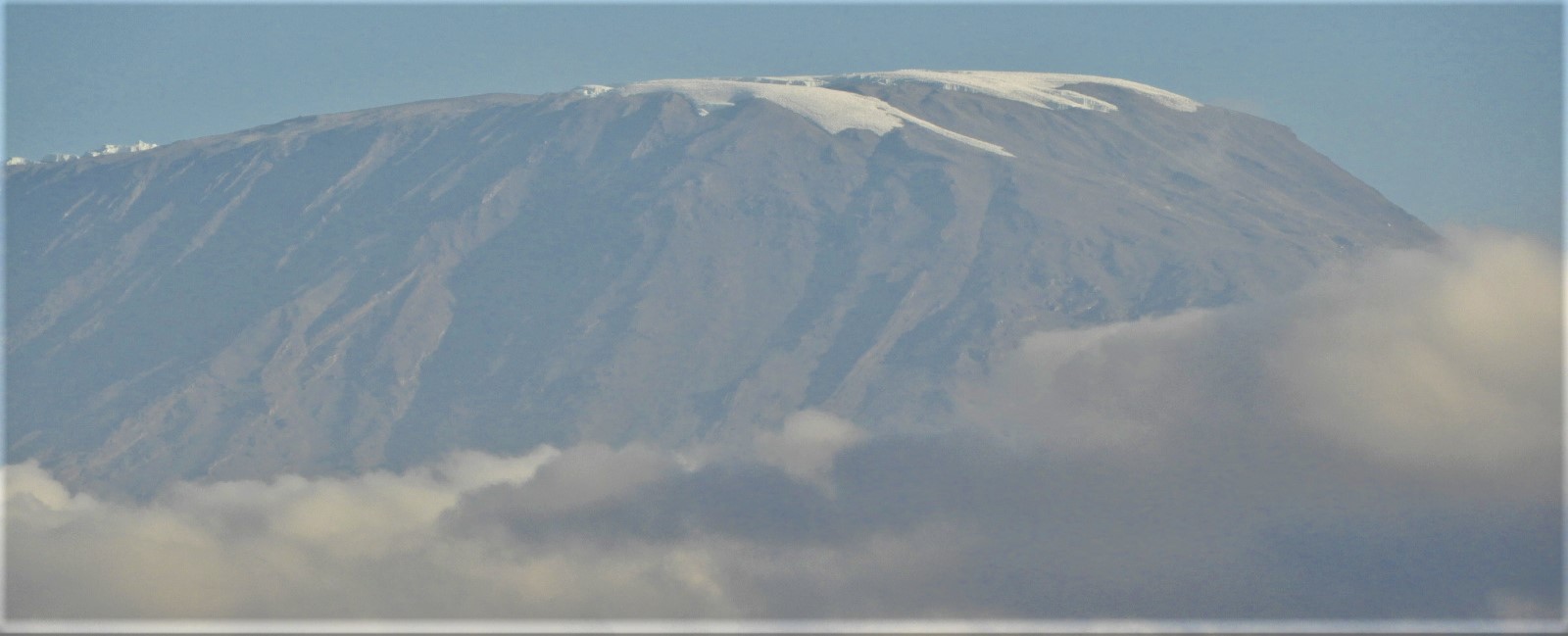» posted on Saturday, September 17th, 2022 by Linda Lou Burton
Future Shock
Linda Lou Burton posting from Amboseli National Park, Kenya– Is this bird a Greater or Lesser Flamingo? Flamingo clues — the Lesser Flamingo is the smallest species of flamingo 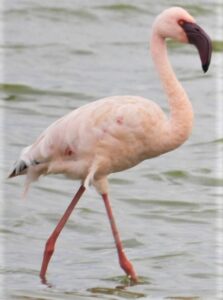 (not the fewest in number). Its plumage is pinkish white; its legs are pink; its beak is black. It stands about 33 inches tall. The Greater Flamingo, it follows, is the largest species of flamingo. Its plumage is pinkish white; its legs are pink; and its beak is pink with a black tip. It stands about 50 inches tall. Since it’s difficult to judge flamingo height when they are knee-deep in lake water and a great distance away from you, I’m focusing on the BEAK. Black, or pink with black tip? I dub this beautiful black-billed bird a member of the Lesser Flamingo species, and a fine specimen at that. We’d finally reached the shallow alkaline lake Amos had promised; it was teeming with birdlife, and dazzlingly colorful, a welcome relief from the brown dust and desolation of the previous hour. The Greater Flamingos (below, note the pink beak with black tip) we found feeding in very different areas of the lake; one which supports grasses, and one a swirl of milky orange, higher in alkalinity.
(not the fewest in number). Its plumage is pinkish white; its legs are pink; its beak is black. It stands about 33 inches tall. The Greater Flamingo, it follows, is the largest species of flamingo. Its plumage is pinkish white; its legs are pink; and its beak is pink with a black tip. It stands about 50 inches tall. Since it’s difficult to judge flamingo height when they are knee-deep in lake water and a great distance away from you, I’m focusing on the BEAK. Black, or pink with black tip? I dub this beautiful black-billed bird a member of the Lesser Flamingo species, and a fine specimen at that. We’d finally reached the shallow alkaline lake Amos had promised; it was teeming with birdlife, and dazzlingly colorful, a welcome relief from the brown dust and desolation of the previous hour. The Greater Flamingos (below, note the pink beak with black tip) we found feeding in very different areas of the lake; one which supports grasses, and one a swirl of milky orange, higher in alkalinity. 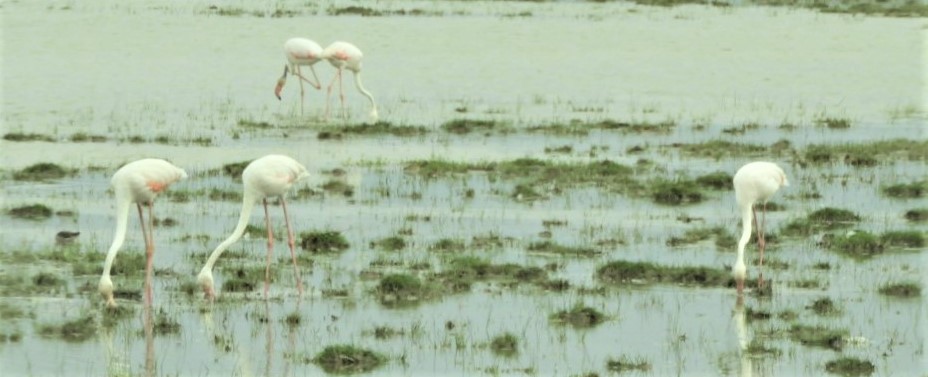
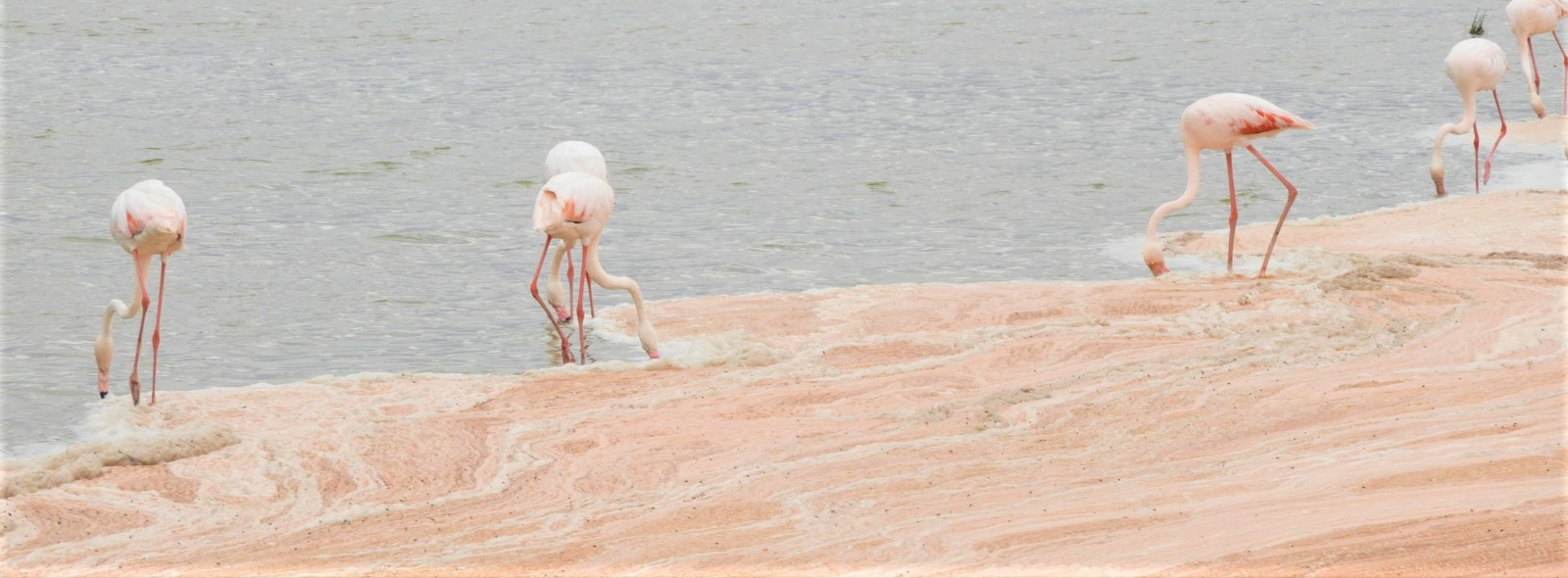 Different areas, different tasty bites? Though both species feed with their heads down, and both eat spirulina, algae which grow in alkaline lakes, their overall food intake is somewhat different due to their beaks. The Lesser Flamingos have such dense filters they can sift out tiny single-celled plants; the Greater Flamingos are able to trap crustaceans and insects with theirs. Does that account, I wondered, for why the Lessers tend to crowd so closely together?
Different areas, different tasty bites? Though both species feed with their heads down, and both eat spirulina, algae which grow in alkaline lakes, their overall food intake is somewhat different due to their beaks. The Lesser Flamingos have such dense filters they can sift out tiny single-celled plants; the Greater Flamingos are able to trap crustaceans and insects with theirs. Does that account, I wondered, for why the Lessers tend to crowd so closely together?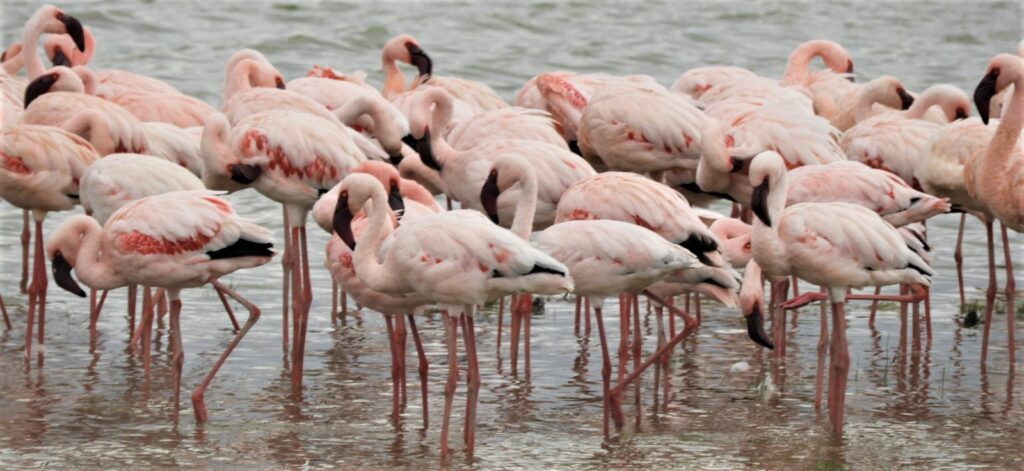
We were parked by the solemn Undertaker Bird when the clouds began to break over Mt Kilimanjaro. Our vision shifted as Amos directed our attention beyond the birds; the few wildebeests grazing; the cluster of trees. Was there enough food, and water, after all? “Some of those trees are fenced to protect them from elephants,” Amos told us. “It’s a reforestation program; too many trees were cut over too many years. These need time to grow. But now we’re in our fourth year of serious drought. The long rains haven’t come to replenish the water in the shallow lakes. Or the snow on Mt Kili. Without fresh snow on the mountain, there is no water flowing to the underground springs, and the swamps will eventually dry up. The trees will die. The animals will die. The flamingos will leave. All of this will be gone.”
Scientists predict all glaciers on East Africa’s 19,341-foot Mt Kilimanjaro will be gone by the year 2030. Climate change has brought about more rapid glacier melt and also impacted rain and snowfall patterns. Note evidence of glacier disappearance in the last ten years: the photo below was taken in 2012; the one above was taken by me on the afternoon of September 17, 2022.
Amboseli National Park https://amboseli.com/

